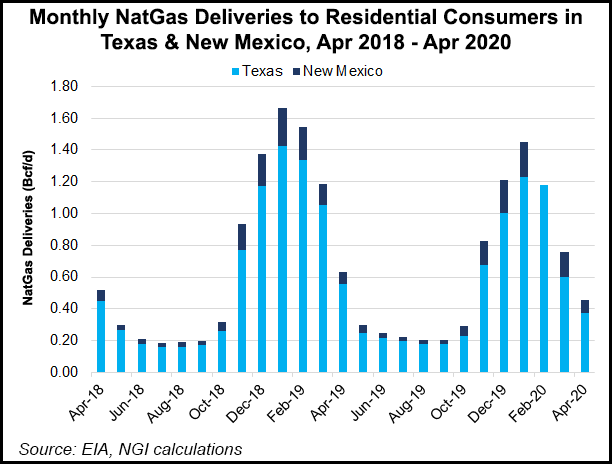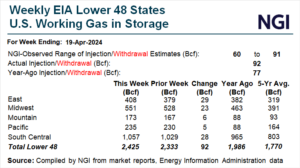Regulatory | E&P | NGI All News Access | NGI The Weekly Gas Market Report
Permian Methane Flaring, Venting Said Still ‘Stubbornly High’
Malfunctioning flares at oil and natural gas facilities across the Permian Basin remain “stubbornly high,” which when combined with preliminary federal data suggest challenges continue for producers in the biggest operating basin in the country.

Environmental Defense Fund (EDF) researchers reported data as part of the year-long PermianMap initiative that began last October. Researchers said based on the latest survey in June, more than one in every 10 flares were either unlit and venting uncombusted methane or were only partially burning gas released.
“Malfunctioning and unlit flares are a longstanding problem for the industry and one of the largest sources of methane emissions in the Permian,” said EDF scientist David Lyon. “The fact that we have not seen any improvement in flare performance over three separate surveys tells us that industry and regulators need to get much more serious about the problem. The best solution is to eliminate routine flaring altogether.”
The new data was consistent with two surveys completed before oil prices crashed earlier this year, EDF noted. In addition, the scientists evaluated data from the National Oceanic and Atmospheric Administration’s Visible Infrared Imaging Radiometer Suite satellite instrument.
The federal data also found Permian flaring on the rebound, with June flaring volumes from West Texas to southeastern New Mexico reportedly up by half following a steep decline from February through May as the pandemic eclipsed demand.
EDF said other satellite data indicates Permian operators sent 280 Bcf of gas worth about $420 million up their flare stacks in 2019, which was “more than enough to supply every home in Texas.” Historically, New Mexico and Texas regulators had not made flaring or methane a regulatory priority, but policymakers are making strides to impose safeguards.
New Mexico regulators on Monday published two separate sets of draft rules to curb within six years most methane emissions from oil and natural gas operations.
“It’s troubling to see methane pollution from flares persist at the same time it appears flaring activity is on the rise again,” said EDF’s Jon Goldstein, director of regulatory and legislative affairs. “This data underscores the need for New Mexico’s oil and gas regulators to implement rules that comprehensively address methane waste and pollution.
“The drafts released this week are a good start, but must be strengthened to close critical loopholes.”
EDF’s helicopter surveys were the first effort to assess the methane emissions associated with flaring in the Permian. The year-long PermianMAP initiative is designed to measure methane emissions using aircraft, stationary towers and ground-based mobile sensors. Satellite data published earlier this year showed total oil and gas methane emissions in the Permian were more than two times higher than federal inventories indicate.
© 2024 Natural Gas Intelligence. All rights reserved.
ISSN © 2577-9877 | ISSN © 1532-1266 | ISSN © 2158-8023 |


